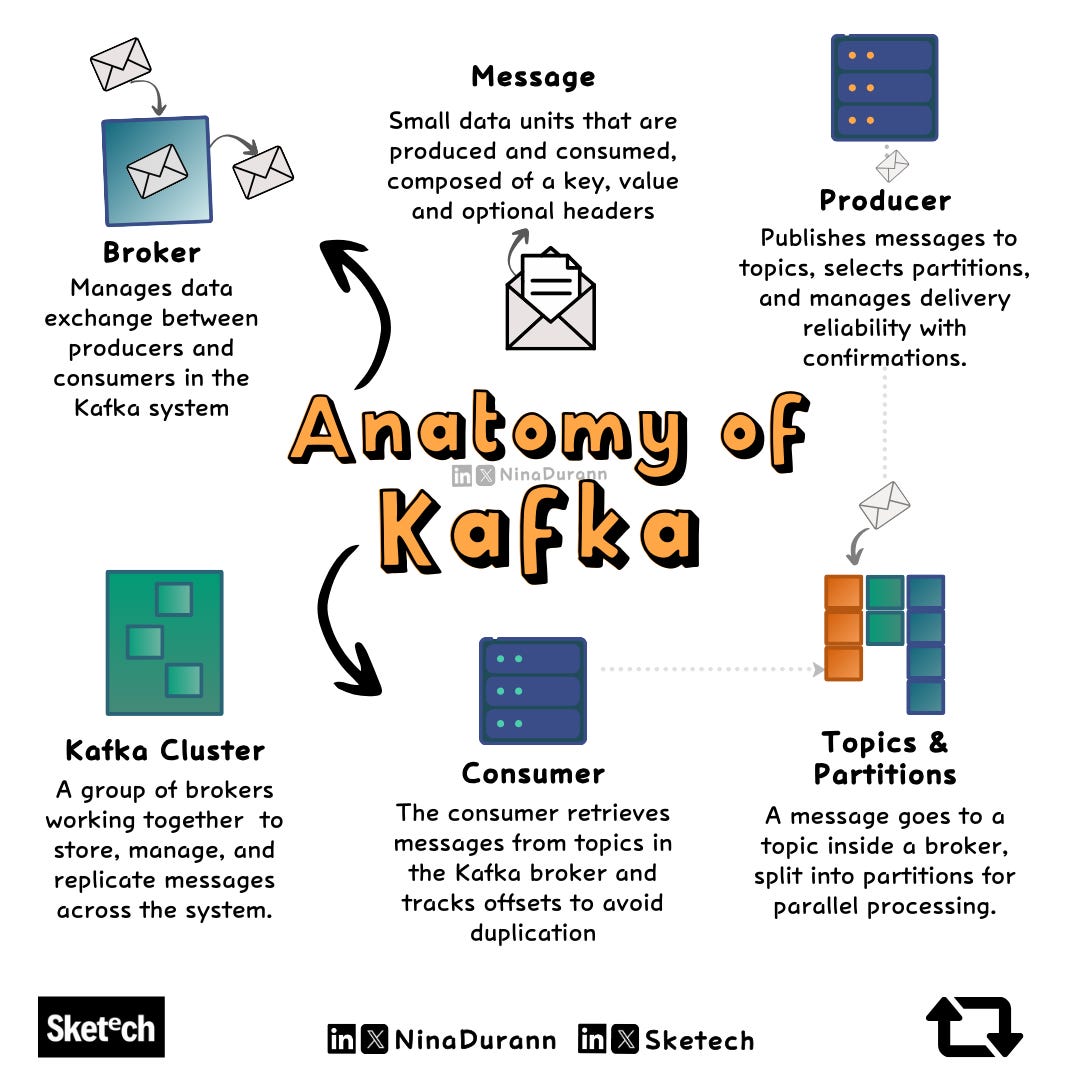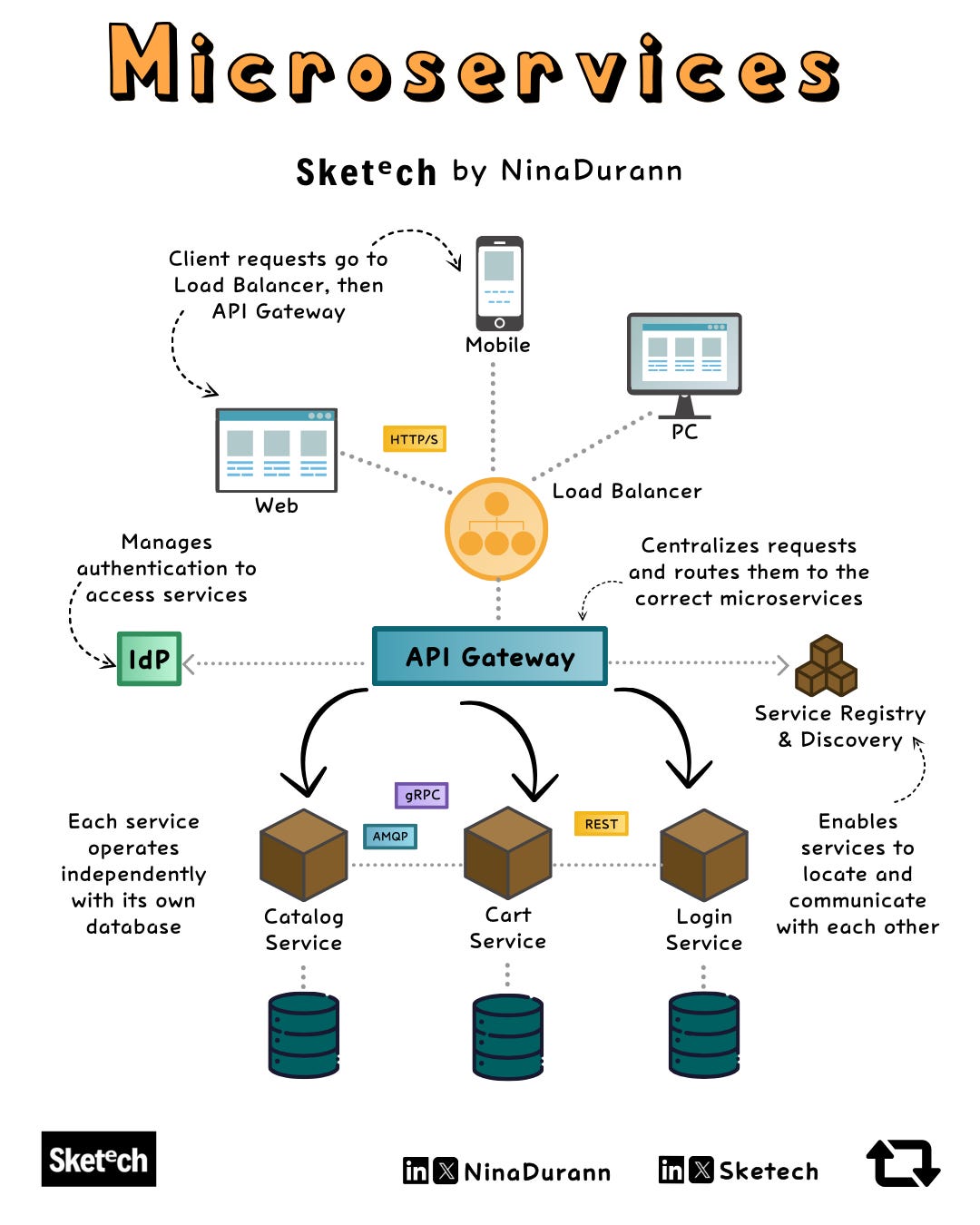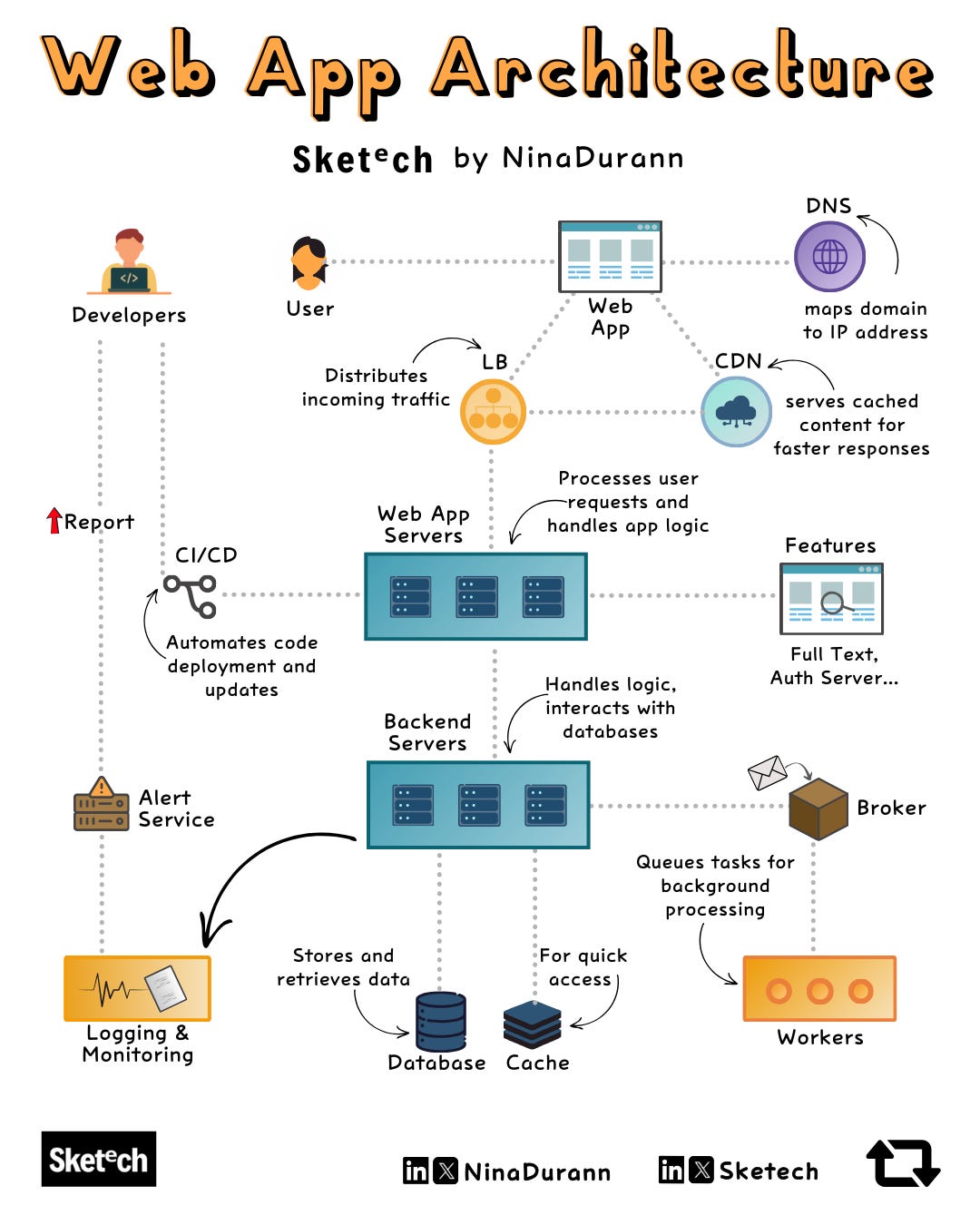Sketech #3 Why Modern Architectures Fail: Avoid Mistakes in Kafka, Microservices and Web Apps
Behind the Scenes of Real-Time Data and Services, illustrated with Visual Thinking Concepts
New edition of Sketech – Visual Thinking for Software Engineers
This week, we’re taking a closer look at how modern architectures can make or break your systems. The visuals will guide you through:
⚡Kafka simplifies real-time data streams but it demands Responsibility
⚡Microservices Architecture ≠ Just Small Services
⚡Web App Architecture: Misconceptions That Can Hold You Back
Discover what really matters when building scalable systems.
Kafka simplifies Real-time data streams but it demands Responsibility
kafka seems like the perfect solution for handling real-time data streams. But is it really that simple?
Reality check: Mastering Kafka isn’t just about sending and receiving messages.
Challenges you can’t ignore
Data Overload: As systems scale, managing huge volumes of data and maintaining performance becomes critical.
Partitioning Issues: Incorrect partitioning can lead to data bottlenecks, degrading performance.
Consumer Coordination: Balancing loads and tracking offsets across multiple consumers is essential, but complex.
What true Kafka mastery looks like
Efficient Partitioning: Knowing how to divide data into manageable segments for optimal processing.
Reliable Replication: Implementing robust replication strategies to ensure fault tolerance and data integrity.
Consumer Management: Mastering offset tracking to avoid message duplication and ensure smooth processing.
How to avoid the pitfalls
Focus on partitioning effectively to handle large volumes of data without bottlenecks.
Set up reliable replication mechanisms to prevent data loss and ensure consistency.
Monitor everything, real-time monitoring is essential to catch issues before they impact performance.
Kafka is powerful, but with great power comes great responsibility. Build a resilient architecture by focusing on what truly makes Kafka work
Microservices Architecture ≠ Just Small Services
Many people think microservices are simply about breaking down large applications into smaller, independent services. But there’s much more beneath the surface.
What microservices skills look like:
Running each service independently with its own process.
Using HTTP/REST, gRPC or messaging protocols like AMQP for communication.
Deploying, scaling and updating services separately.
What true microservices expertise is:
Achieving data consistency across distributed systems.
Balancing fault tolerance with system complexity.
Monitoring and debugging services in real time across multiple environments.
What people often miss: It’s not just about dividing an app into pieces—it’s about ensuring each service can work autonomously without compromising the overall architecture. Without thoughtful design, services can easily become tangled and hard to manage.
Web App Architecture: Misconceptions That Can Hold You Back
Building a web application sounds straightforward: connect users to a service, handle their requests, and deliver a smooth experience. But is it really that simple?
Here are 4 common misconceptions about web app architecture that you should avoid:
The DNS just points to your app, right?
Reality: DNS does more than just map your domain. Misconfigurations can lead to poor latency or downtime.
The CDN will solve all performance issues.
Reality: CDNs help, but you still need a strategy for caching dynamic content and managing cache invalidation.
Load Balancers distribute traffic evenly without fail.
Reality: Not setting up proper health checks can lead to routing traffic to failing servers, impacting performance.
Database scaling is as simple as adding more storage.
Reality: Scaling databases involves careful planning around partitioning, replication, and latency. Simply adding storage won't address performance bottlenecks.
These misconceptions can lead to performance bottlenecks and outages when scaling your app. So, how do you get it right?
→ Focus on partitioning databases effectively to handle large amounts of data.
→ Set up proper health checks for Load Balancers to avoid routing issues.
→ Use a mix of caching strategies for both static and dynamic content.
Understanding the full picture of web app architecture, beyond the surface-level components, will help you scale successfully without hidden pitfalls.
Making complex software concepts easy.
🎯 Catchy sketches to learn faster.
Sketᵉch is now on Instagram. Join me to explore More Visuals and Grow Together! 👇





